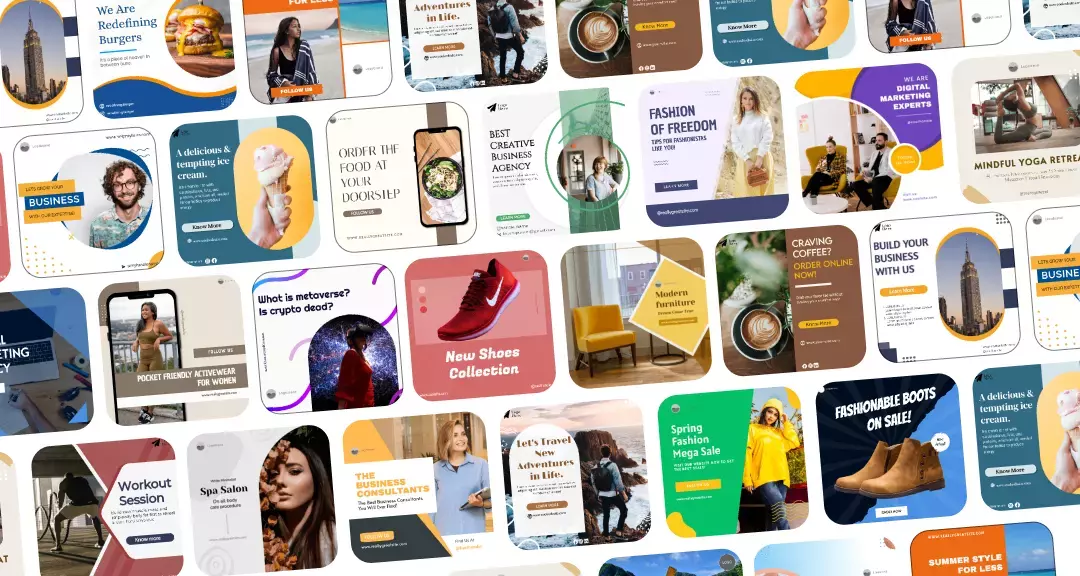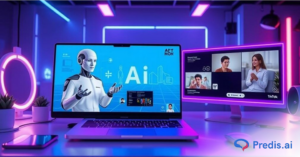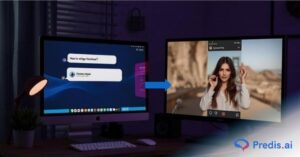Gone are the days when companies slammed their new joinees with plain, bland, boring training presentation decks and asked them to get it all in. And thank god for that, because not only is it hard, it is counterproductive. But what happened to those decks? They have been replaced with shining AI-generated corporate training videos that make the viewer focus. The result? They are better equipped to hit the ground running, which is all that the company wants, really!
But how do you create AI corporate training videos that manage to make this happen? Simple, follow these best practices that we are going to be discussing down here to a tee, and you are sorted! So, shall we proceed?
Why Use AI for Your Corporate Training Videos?
There is no doubt that videos package the content nicely and delivers it to the audience, much better than a manual or a PPT deck. But why would you pick AI to make your corporate training videos rather than going the traditional way?
Because the traditional way of video production is expensive, takes a long time to get done, and scaling it can be a real task. But the same is not true for AI. Because AI can:
- Create videos within a few minutes
- Does not ask you to provide video footage – meaning no shooting required
- It doesn’t even require you to record a voiceover for the video
- Don’t like the video? No problem! Scrap it up and start again! You have all the time you need.
- Have no budget for an editor? Even a beginner with new design experience can easily use these AI tools!
- Create a personalized learning journey for different employees? Sure!
- Want to create another 10 videos on short notice? Absolutely yes!
There is no reason to say the AI doesn’t make the cut, because everything you want, it has! And businesses see this too because 46% of large companies use AI-generated videos to train their employees! Mid-sized and smaller companies are also jumping on the bandwagon with impressive adoption. So, if you are still thinking, it is high time you actually started implementing AI in your training videos rather than second-guessing yourself.

Best Practices To Create AI Corporate Training Videos
Okay, this is where we get to the crux of this blog’s topic. How do you make this efficient? Let us break it down one by one.
1. Know Your Audience
The path to making a great strategy work is to have a solid foundation of knowing what your audience, aka employees, know and don’t know. So, to make that happen, start with a survey! Ask yourself.
- Are my employees new hires or experienced employees?
- Do they require basic information, or does it make sense to give them a deep dive on a particular topic?
- What is their current knowledge level?
Based on these questions, you will have a better idea of where to start and how to impart knowledge in a way that your employees will be able to grasp and use.
2. Align Stakeholder requirements
Your employees are your primary stakeholders, but it is also important to keep the rest of the team, your managers, aligned on the objective as well. Create a curriculum based on what you found out about your employees from the first step, and see if it matches other stakeholder requirements.
- Does the module clearly cover the topics that you wanted to discuss?
- Where do you want to make the video live?
- When do you want it to go up so your employees will have the time to learn and adjust?
- What is the budget that you are willing to spend on the AI tool that will generate the videos? Do you have a tool that can get it done within said budget?
- List down the KPIs that you want to measure at the end of this training exercise to monitor their effectiveness.
3. Make the Script
With all these requirements in mind and a curriculum in place, the next step is script writing. This is also where the easy part begins because AI can take care of a major part of this workload for you.
You absolutely do not have to sit down and write a script for any number of videos that you want to create. Because if you give a raw text prompt to an AI generative tool like Predis AI, it automatically churns out a script that you can use as such.
The only thing you have to make sure of is whether the script matches the type of audience that you have in mind. For example,
- If they are a new employee, the script can be pretty straightforward. It can start with a basic welcome message and dive into easy topics of introducing companies, their policies, and the basic information.
- For seasoned employees, you might have to assume a level of knowledge and provide a deep dive into the in-depth topics, such as industry best practices and policy changes.
The good thing is you can input this kind of information in the prompts as well, so AI can take note of it and create videos accordingly.
4. Focus on the technicalities
The beauty of AI tools is that it does not stop at making scripts; it goes ahead and makes the videos as well. So, most probably at this point in time, you already have a solid video in your hand.
When you have a video, make sure to check if they tick the following boxes:
- Is the information clear? Can people understand the context without spending too much brainpower?
- If the content is delivered in a logical structure, going from problem to giving more context about the issue, to finally offering a solution?
- Is the video concise enough to keep your audience interested and long enough to convey the whole message?
- Are the videos visually appealing?
- Does it have interactive elements, like mini animations that add to its charm?
- Is the voiceover aligning with the video?
- Does the avatar you used fit with the video?
- Can it be understood without audio?
Basically, we want a video that can be easily digested and engaging enough to see through to the end. Like this example:
A pro tip is that you can even get to know if your audience actually absorbed the information properly by adding quizzes at various checkpoints of the video!
5. Monitor Performance and Use Feedback
Apart from view count, many other metrics can show us how effective our videos are. Only by monitoring these engagement rates can you really see what is working and what is not. This way, you can actually make changes that create an impact.
Some of the metrics you can monitor are:
- What is the drop-off rate? – This is an indication to see how many people actually watch the video to the end. By seeing where people drop off, you can find areas that people lose interest in.
- Quiz analysis – Remember the interactive quizzes that we suggested you include in the videos? Yes, analyze the answers that you get from your employees. See if they can answer the questions in one go, or do they have to try multiple times?
Pro tip: You can even optimize the training videos for search engines and get traffic from other sources as well. Just use related keyphrases, compelling descriptions, and a hook at the beginning of the video to make the audience engage better with the video.

Where Can You Use AI-Generated Training Videos?
AI-generated corporate training videos have a myriad of use cases. Some of them that you can consider are:
- New Employee Onboarding Video – These kinds of videos are a big hello to your newcomers. And with AI, you can even customize it to the individual hire, making them feel more welcome. Take this example:
- Training modules – There can be a variety of things that you may need to teach your employees, from compliance protocols to policy changes. With AI-generated videos, you can hit the ground running by going from ideation to video in a matter of minutes. For example, check out this lifting manual that is aimed at reducing back injury in workers.
- Edit Videos – In a traditional kind of video, to modify it or add a couple of section that talks about a new law, you have to re-shoot and edit it. But in an AI-generated video, the additional portions can be added seamlessly and downloaded quickly.
- Translate videos to multiple languages – Having a diverse team means that sometimes you have to create the same content in multiple languages. This can be achieved easily with AI tools without having to hire dubbing actors.
- Bite-sized learning modules – Even social media channels are leaning towards short-form content to keep the attention of their viewers. You can even take a page out of their handbook and create micro-learning modules with micro-learning platforms that can be consumed in the employee’s own leisure.
How To Create A Training Video with AI?
Now that we know what and all, we should do to make an AI-generated training video reap the maximum benefits. The next step is to figure out how to use an AI tool to create training videos.
So, let us walk through that whole process step-by-step:
- Sign up for Predis AI, which is an AI training video generator, and get a free account if you are a new user.
- Click “Create New” on the left side column to start creating a new video
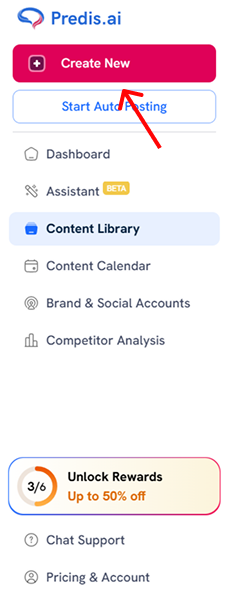
- There are many kinds of social media and ad creative presets for you to choose from. But, since we are doing a training video, let us pick an Avatar video for this use case.
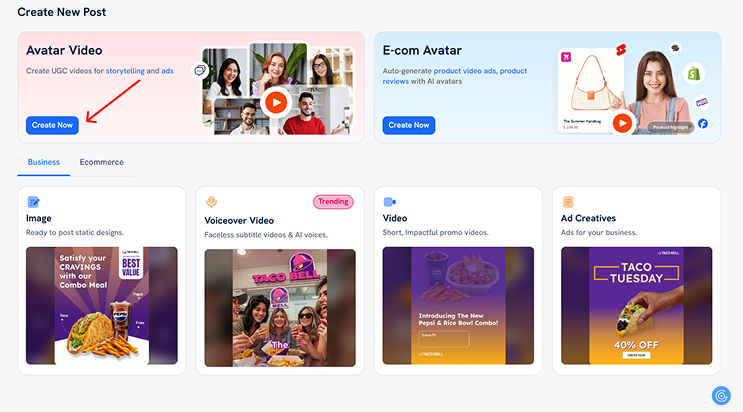
- In the prompt section, provide a detailed description of the kind of content along with the script of the video. Proceed to pick the aspect ratio, avatar look, and the template for your video.

- Once you make the required changes, click “Generate” and the AI will generate the video in a matter of seconds.
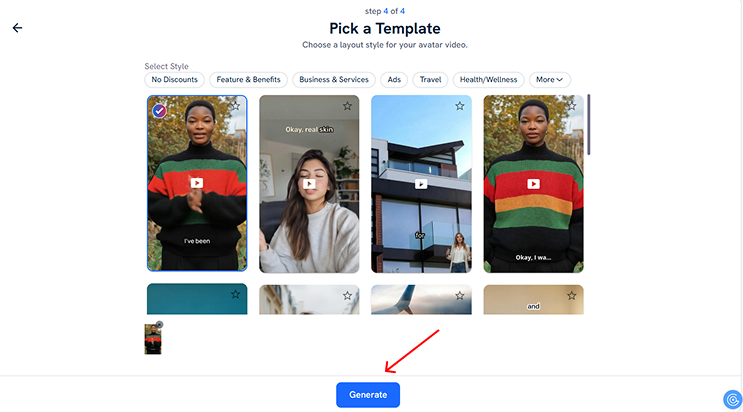
Once that is done and out of the way, you can even make changes to the video in the editing interface.
Unrelated to training videos, if you are doing social media posts, you can get them scheduled and visualize them in a content calendar, which has some added advantages.
Final Thoughts
The developments in AI are not seeming to take a halt in the near future. When its capabilities improve, the use cases are going to improve as well. By being aware of them and adopting them actively, you can save time and resources, which can go back into your business.
So without further ado, sign up for Predis AI and start creating your training video today!
FAQ:
AI corporate training videos are educational or onboarding videos that are created exclusively with AI, with little to no manual effort. This way, you get to save time and resources that you otherwise would have utilized in traditional video creation methods.
By using AI in making corporate training videos, you get to scale easily, reduce production costs, and make updates efficiently.
